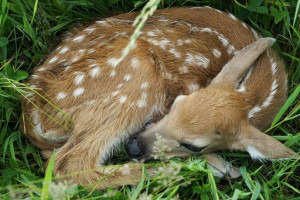“If You Care, Leave Them There”
Source: New York State Department of Environmental Conservation
“In the spring and summer, you may come across young wildlife that appear to be abandoned. In an effort to reduce the spread of COVID-19, New Yorkers are spending more time at home than normal and seeing more young birds and wildlife as a result. While some are learning survival from one or both parents, others normally receive little or no parental care. Often, wild animal parents stay away from their young when people are near. The young are left hidden in a safe place and the parent may be nearby. Because of their behavior, the most common species to be mistakenly “rescued” by humans are young fawns, cottontail rabbits, and fledgling birds. When people attempt to help or raise wildlife, these well-meaning acts of kindness tend to have the opposite result. Many of the animals soon die despite their best efforts.
DEC also reminds people that young wildlife are not pets. Keeping wildlife in captivity is both illegal and harmful to the animal. Wild animals are not well-suited for life in captivity and may carry diseases that can be transferred to humans. When people attempt to handle or a young wild animal that is obviously injured or orphaned, call a wildlife rehabilitator. All wildlife rehabilitators are trained volunteers licensed by DEC.”
A great message from NYSDEC and an important one at that. In the Adirondacks, you’ll most likely come across a variety of animals and critters that look like they may need help. The Adirondacks are a home to deer, beavers, foxes, wolves, squirrels, many birds and much more! Even though they may be cute and it’s tempting to help, you’d be doing more harm than good if you step in. Be sure to call a wildlife rehabilitator before you step in.
